Darkfield Microscopy Of Pfizer's Enbrel (Etanercept) Shows Nanoantennas, Microrobots, Self Assembly Nanotechnology Comparable To C19 Bioweapons

ANA MARIA MIHALCEA, MD, PHD | substack.com/@anamihalceamdphd
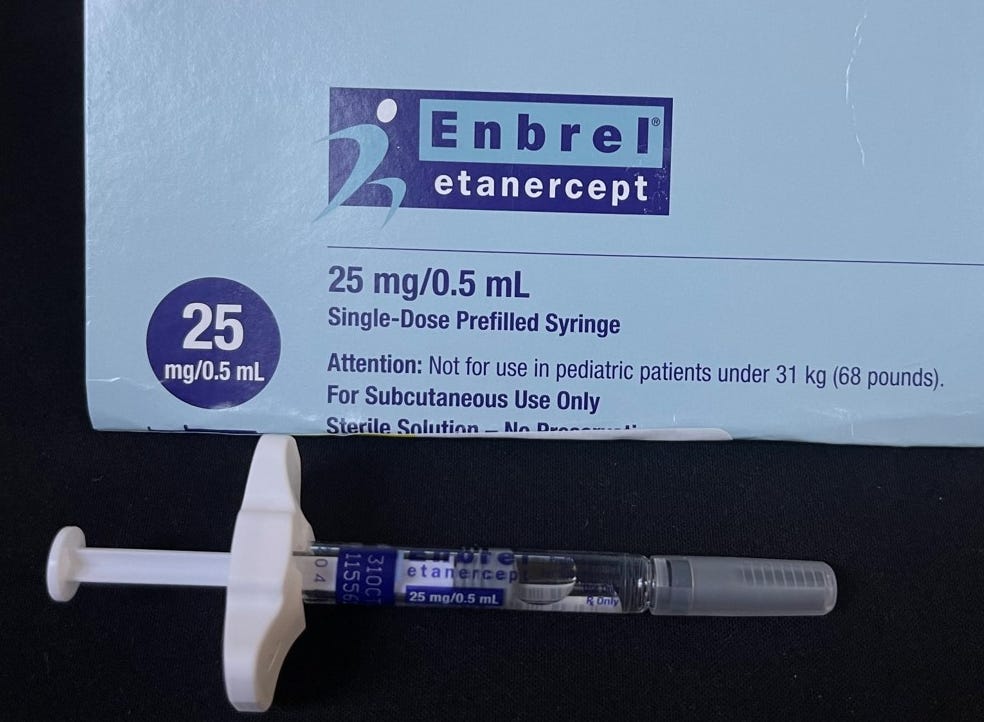
Enbrel - a product of Pfizer - is a TNF inhibitor that is used for autoimmune diseases like Rheumatoid Arthritis. I was given a syringe to analyze by a patient who has been a long term user of this medication. When I initially placed some drops of the solution of the slide, nano and microrobots were visible - enlarge view for better visibility and look for moving and blinking lights:
Below video is 2000x magnification and you can see light emission of the microbots in different spectra - orange and whitsh moving robots with blue hue surrounding them:
This is the self assembly nanoflowers that were seen in the areas of the slide the next day after drying without slide cover. The difference between having a slide cover and not can be the oxygen content that is utilized for the chemical reaction of self assembly. Very ornate flower like mathematically fractal plasmonic antennas developed.
Enbrel 200x magnification shows elaborate fractal self assembly of nano antennas
Video: Enbrel 1500x mgnification
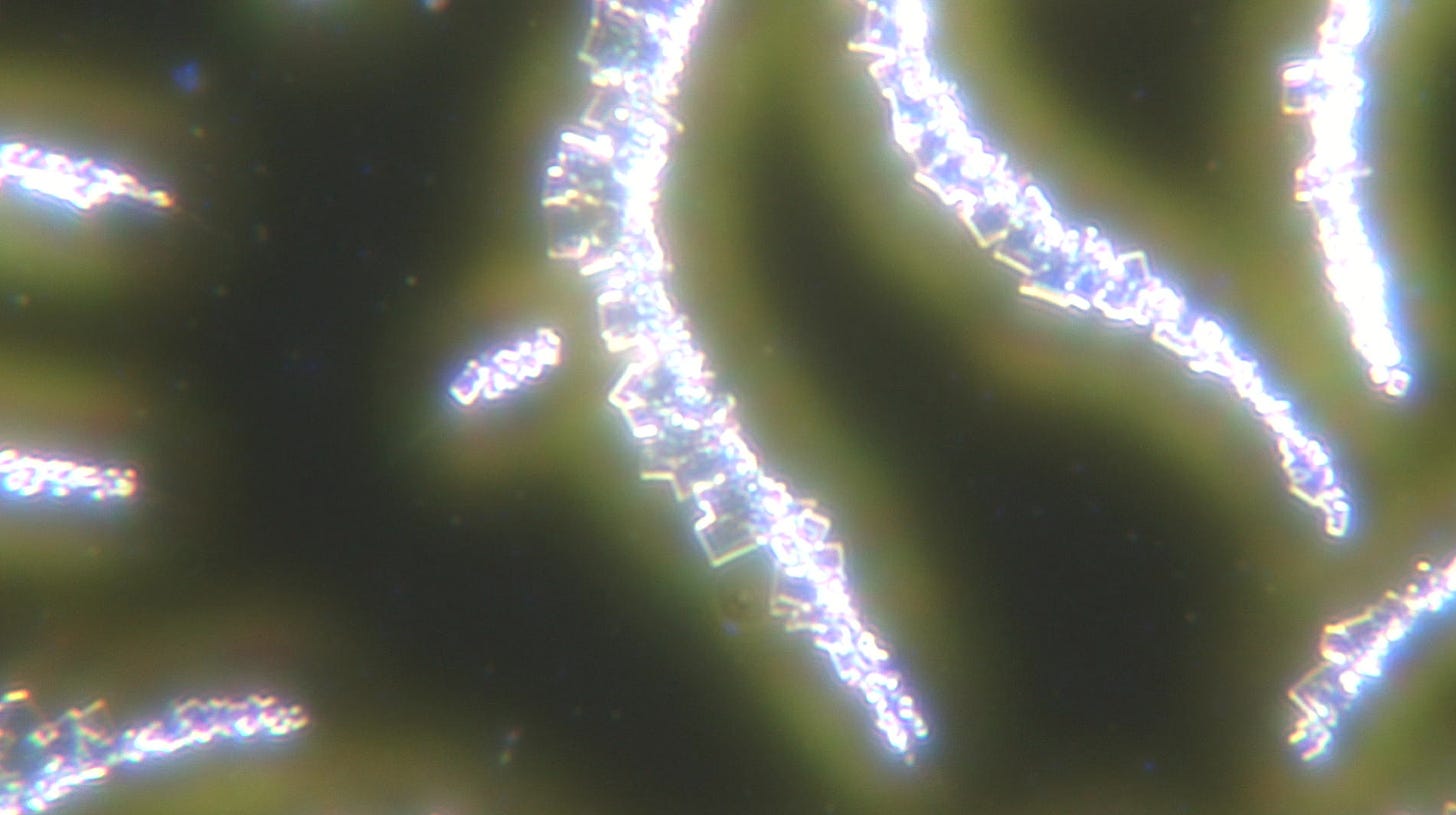
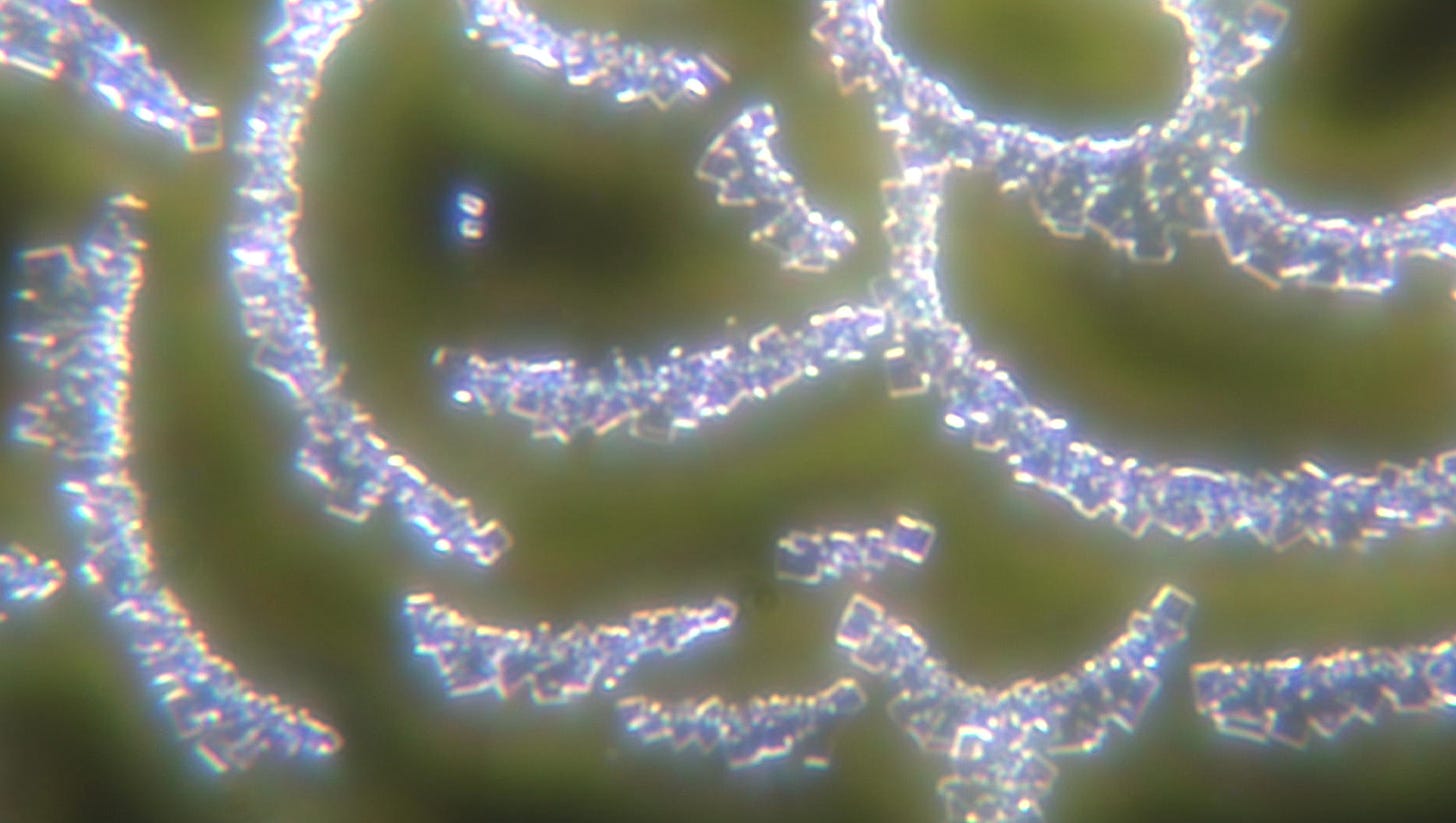
Image: Enbrel 2000x magnification shows the crystalline microchip array of the self assembled nanoantennas - the crystals appear to have multicolored light emission (blue, violet, pink, gold)
In the electron microscopy work done of the C19 shots by Dr. Sangorrin and Lorena Diblasi from Argentina and their team, when trying the Cansino C19 shots round flower like features emerged. These are nano antennas
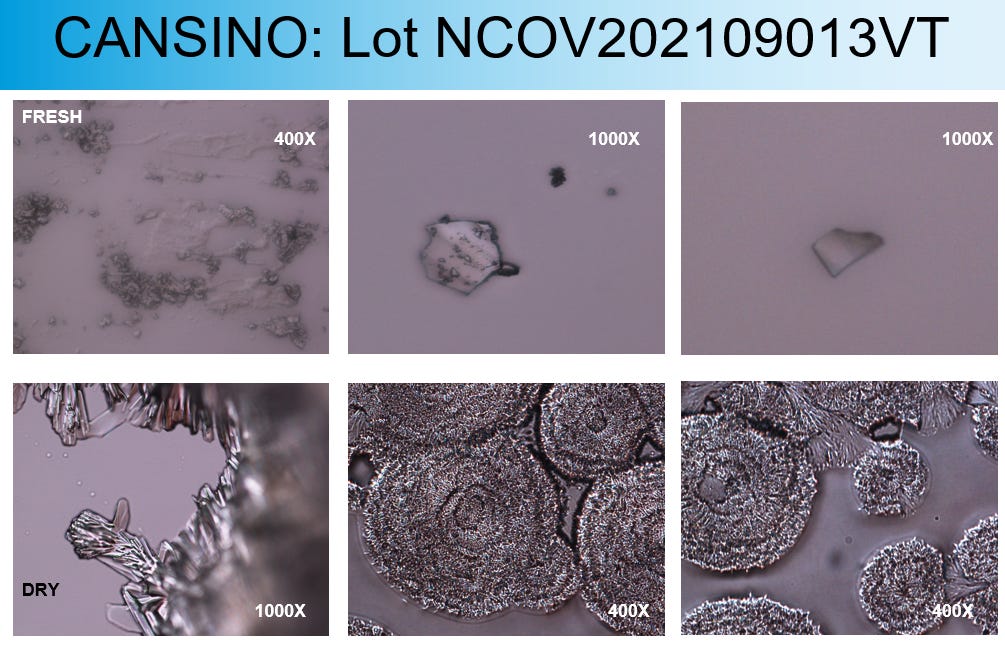
Here you can also see elaborate nanoantennas with a red filament that emerged ( Enbrel 400x magnification)

You can read about flower shaped nano-antennas here:
Design of flower-shaped dipole nano-antenna for energy harvesting
In this study, a novel design of nano-antenna for energy harvesting is proposed and analysed using three-dimensional finite difference time-domain method. The new design consists of three elements nano-antenna with elliptical shape and with air gap. The numerical simulations are investigated for improving the harvesting efficiency of the nano-antennas within the wavelength range from 400 to 1400 nm. The suggested design has high efficiency of 74.6% at 500 nm where the irradiance of the sun is maximum. The proposed nano-antenna shows an improvement in the harvesting and the total harvesting efficiency over the conventional dipole antenna by 15 and 32.7%, respectively.
Polyimide (PI) films with special wettability have received great attention for their potential applications. However, it is still a challenge to fabricate PI film with tunable wettability from hydrophobic to superhydrophobic and tensile strength > 140 MPa. Herein, PI films with tunable surface wettability induced by the nano flowers of SA through the self-assembly. Flower-like ZnO was grown on PI film without seed layer or morphology controlling agents via a simple hydrothermal method, which promoted to the self-assembly of SA into nano-flowers.
This is Enbrel sample dried overnight with slide cover - you can see wire antennas with crystals at the end
The same pattern was found by Dr Geanina Hagima in the Comirnathy C19 shots.
Hybrid Plasmonic Nano-Antenna Design and Analysis for Optical Applications
For good performance microwave and radio frequencies are used in several applications. Nanotechnology is offering the tech community with an innovative set of tools for designing and manufacturing nano scale devices that can perform basic tasks like detecting, computing, and storage systems. It is the result of the advancement of knowledge in many areas, to which recent advances in technology have contributed a great deal, and these results developed modern systems i.e., antennas with features, lengths shorter than the wavelengths of the optical signal, i.e., numerous nano antennas. Microwave and RF antennas have spectral equivalents called optical nano antennas. Technical advances have made it possible to design antennas on a nanoscale. Sensing, photoemission, photo detecting, scattering, thermal expansion, spectroscopic, interlinks, and nanotechnology are all disrupted by these nano scale antennas
In another slide preparation this assebled overnight - a dense network of plasmonic nanowires:
Here you can see research about this:
Monodisperse rod-like colloidal particles are known for spontaneously forming both nematic and smectic liquid crystal phases, but their self-assembly was typically exploited from the fundamental soft condensed matter physics perspective. Here we demonstrate that depletion interactions, driven by non-adsorbing polymers like dextran and surfactants, can be used to enrich the self-organization of photon-upconversion nanorods into orientationally ordered nematic and smectic-like membrane colloidal superstructures.
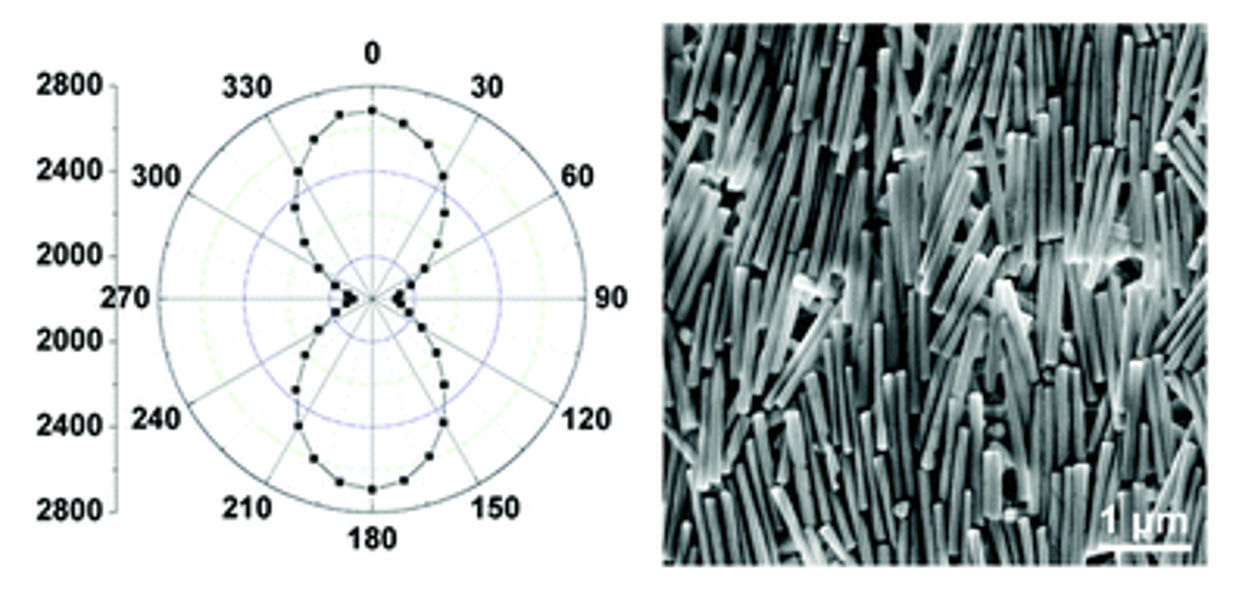
Here is the self assembly in different phases - flower formation and elaborate nano mesh network Enbrel 100x magnification
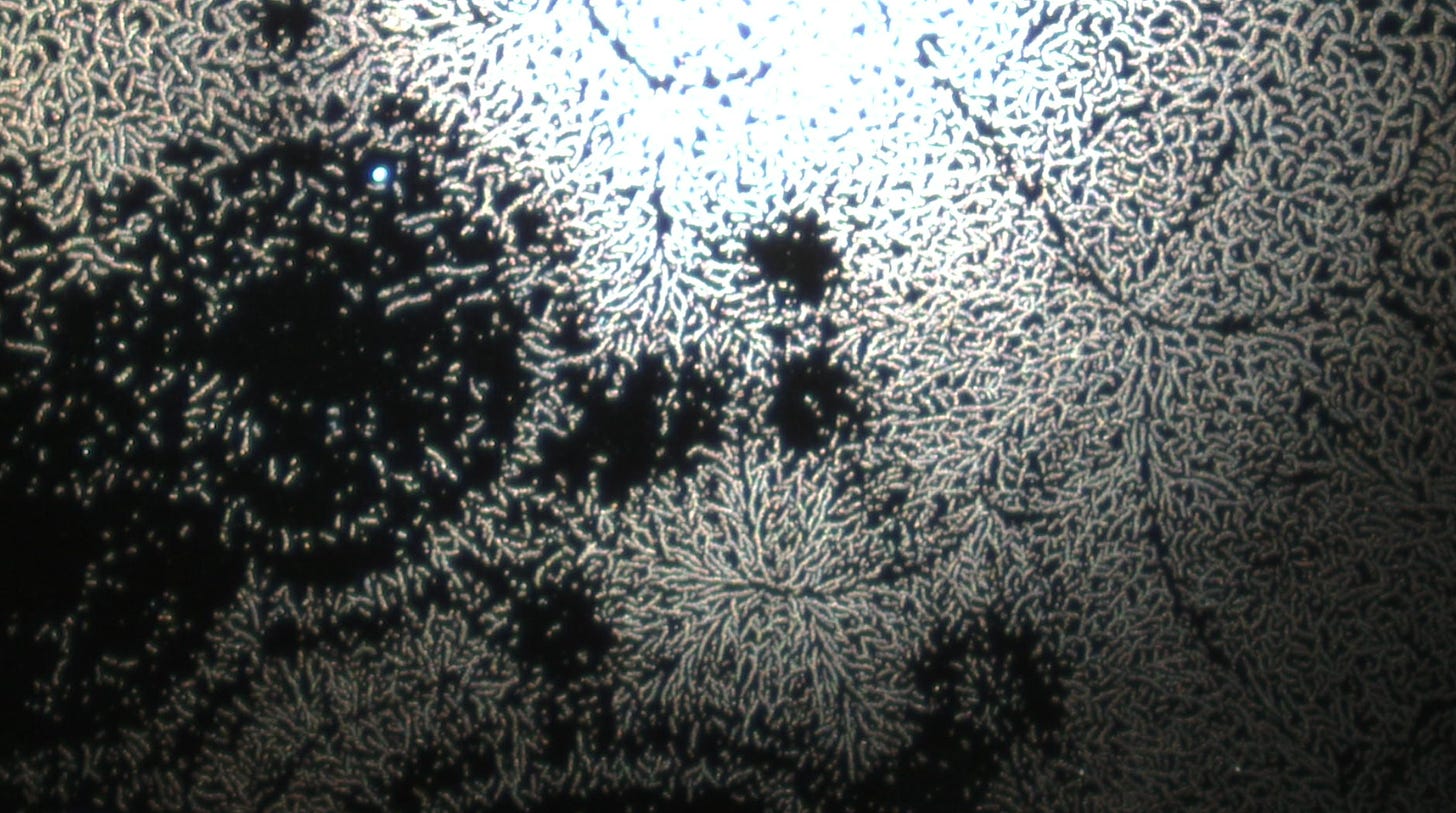
You can also see an elaborate 3 D plamonic nanostructure that assembled after drying (Enbrel 400x):
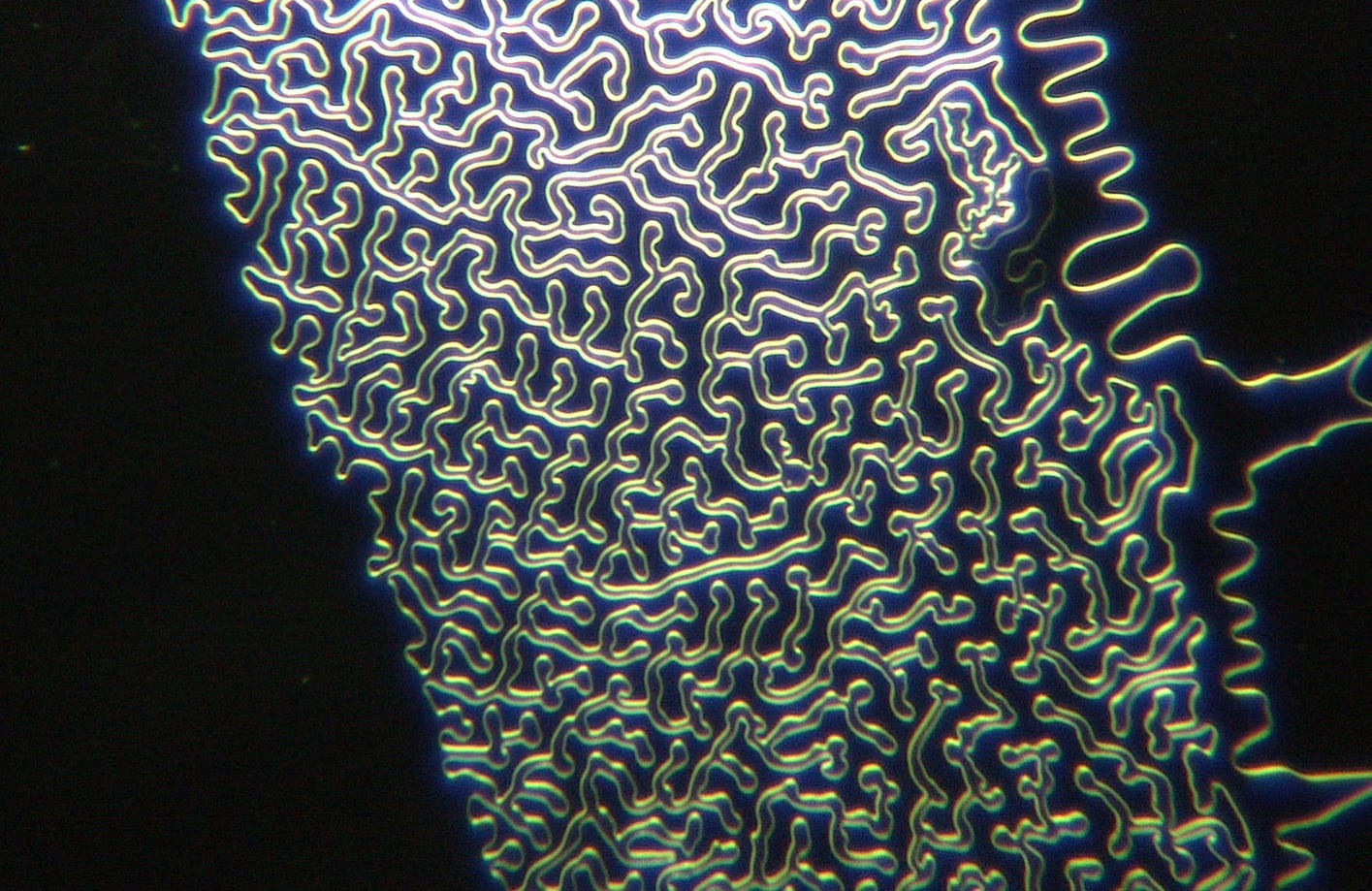
Here you can see the self assembly of plasmonic nanostructures has the same pattern only I show the outline due to the unique Darkfield microscopy properties:
Fabrication of the 3D plasmonic nanostructures.
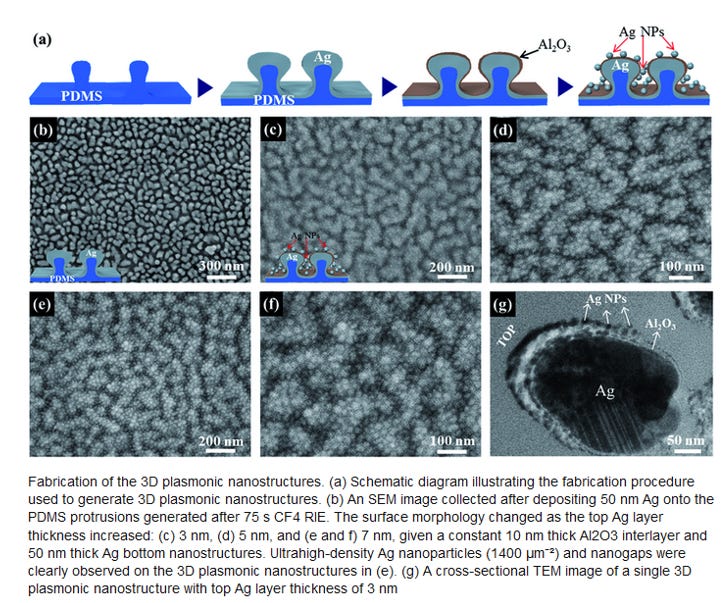
Is it known that Enbrel has microelectronics in it? Yes - here is the completed study done at Cedars Sinai Medical Center:
Wireless Motion Sensors for Rheumatoid Arthritis Patients - Pilot Study
This study aims to provide preliminary evidence of the validity of a sensor-based assessment of rheumatoid arthritis (RA) symptoms, and to collect structured qualitative feedback from RA Enbrel patients regarding the potential of a future biosensor/PRO mHealth application. The investigators' overarching hypothesis is that if patients have better and more timely information about whether Enbrel is working, then they will become more empowered and engaged in their treatment, more curious about how it may - or may not - be working, and potentially more compliant with therapy. However, this hypothesis remains largely untested.
Enabled by recent advances in microelectronics, signal processing algorithms, and networking capabilities, wireless health technologies hold the potential to support numerous aspects of these recommendations. Namely, motion sensors might contribute to the formation of a complete feedback loop involving self- monitoring, data presentation, and tailored messaging. Consumer Health Informatics (CHI) applications that offer complete feedback loops hold the most promise for improving self-efficacy.
Summary:
Pfizers Enbrel has known microelectronics for patient monitoring. My patient had no idea she was being injected with electronics and has never consented to this. How many people do not know that they are being injected with nanotechnology devices that can be used for dual purpose surveillance and targeting?
I show the self assembly nanotechnology that has similar microrobots, nanoantennas that have also been found in the C19 bioweapons. I also documented this in Insulin as well as other medications:
Hydrogel In Injectable Medications - Dexamethasone, Insulin, Benadryl, Lidocaine
Hydrogel Filaments Found In Insulin
Darkfield Microscopy Of Dental Anesthetics
Original Article: https://anamihalceamdphd.substack.com/p/darkfield-microscopy-of-pfizers-enbrel

Comments ()